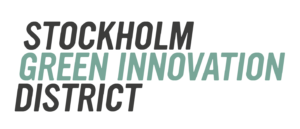– FROM WASTE TO THE PRODUCTION OF COMMODITIES –
SWIC
REUSE OF PURIFIED WASTEWATER
Reusing purified wastewater (instead of discharging it into lakes and seas as currently done) is becoming increasingly important as water shortages spread.
REUSE OF PURIFIED WASTEWATER
The Swedish Water Innovation Center (SWIC) is a development and test facility for new climate-efficient and sustainable technologies and processes for water purification and reuse, sludge treatment, and the extraction of bioenergy and bio-based products. Both municipal and industrial water treatment and recycling are developed and tested. The centre is jointly run by IVL Swedish Environmental Institute and KTH Royal Institute of Technology.
One major environmental project is Stockholm’s Future Wastewater Treatment [Stockholms Framtida Avloppsrening in Swedish, abbreviated to SFA], which entails upgrading the Henriksdal wastewater treatment plant with membrane bioreactor (MBR) technology to increase its processing capabilities and enable it to fulfil future emission requirements. In collaboration with Stockholm Water and Waste [Stockholm Vatten och Avfall in Swedish], IVL is building the future Henriksdal treatment plant on a pilot scale in order to study the opportunities and challenges of the new process. The project is focused on significantly reducing both energy consumption and the use of chemicals.
SWIC has long worked with the concept of approaching waterworks not only as facilities for wastewater treatment, but also as production facilities for resources that are important to society. Reusing purified wastewater (instead of discharging it into lakes and seas as is currently done) is becoming increasingly important as water shortages spread. Based on SWIC’s research, Simrishamn has supplemented its treatment plant with ozone and carbon filter treatment, which eliminates drug residues and also yields purified wastewater that can most likely be returned to the groundwater following UV treatment.
The focus is on reducing levels of nitrogen and phosphorus, pharmaceutical residues, and PFAS using biological, chemical, and physical methods, while also enabling nutrients, metals, and purified water to be returned to the cycle and energy to be produced. The experiments are carried out on a scale that allows the solutions to be implemented on a full scale.





